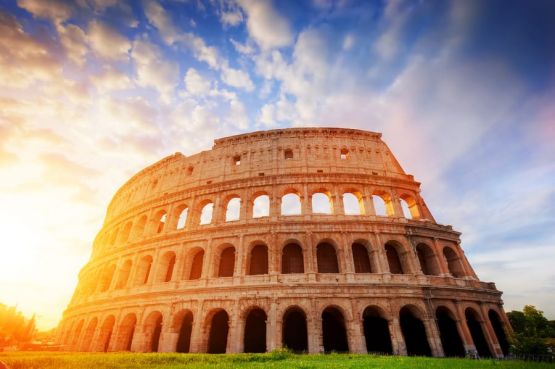Built out of concrete and stone in 70AD, it is considered one of the greatest works of Roman architecture and is the largest amphitheatre in the world. Who would’ve guessed that such a masterpiece of engineering was constructed nearly 2000 years ago!
The contrivance of the Emperor Vespasian and his successor and heir, Titus, the Roman Colosseum held 50,000 spectators and was used for gladiatorial contests and public spectacles. The building closed in the early Medieval Era, but was later used as housing, a fortress, and a Christian shrine, among other things. With such history and spectacle, secrets of the Roman Colosseum are plentiful.
Amphitheater Under Water
Did you know that the Colosseum was once used for mock sea battles? That’s right! The amphitheatre was flooded with enough water to float vessels; an incredible feat. (These amphitheatres housed a central pit that was deeper than the rooms normally found underneath of the arena, which served as a basin.) And then the flooded arena was rapidly drained before the eyes of spectators, quickly turning back into a locale for earth-based shows and gladiatorial combat.
Chaos in the Colosseum
Seating was disorderly in the Colosseum until Emperor Augustus ordered “social control”. He put a rule in place that reserved the front rows for Senators only. There were also reserved areas for married men. Women were not allowed to view the gladiators, except from the upper seats.
Death of a Gladiator
A gladiator’s life may have been full of excitement, but it was short: very few gladiators survived more than 10 matches. It is said that one gladiator named Felix lived until he was 45, and one retired at the age of 90. The average age of death for a gladiator was 27; mortality in the 1st century was 19/100.
Elephants, Giraffes, and Panthers – Oh my!
The Colosseum was not only home to gladiatorial shows. An equally popular spectacle was the animal hunt, or “venatio”. The show employed a number of wild beasts imported from Africa and the Middle East, and included elephants, giraffes and panthers, among others. These shows were staged amid very elaborate sets that contained trees and movable buildings.
Come see for yourself!
Today, the Colosseum is one of Rome’s most popular attractions, receiving millions of visitors annually. Would you like to skip the lines and explore the Colosseum with a local guide who knows all these little-known facts and more?
Contact Avventure Bellissime today to book your exciting walking tour of Rome today. Meanwhile, check out Avventure Bellissime’s Rome Walking Tour below.
This day-trip includes an exciting Colosseum tour, as well as skip-the-line tickets for a variety of other popular attractions. Learn about Rome’s rich history from expert Avventure Bellissime guides.











Comments